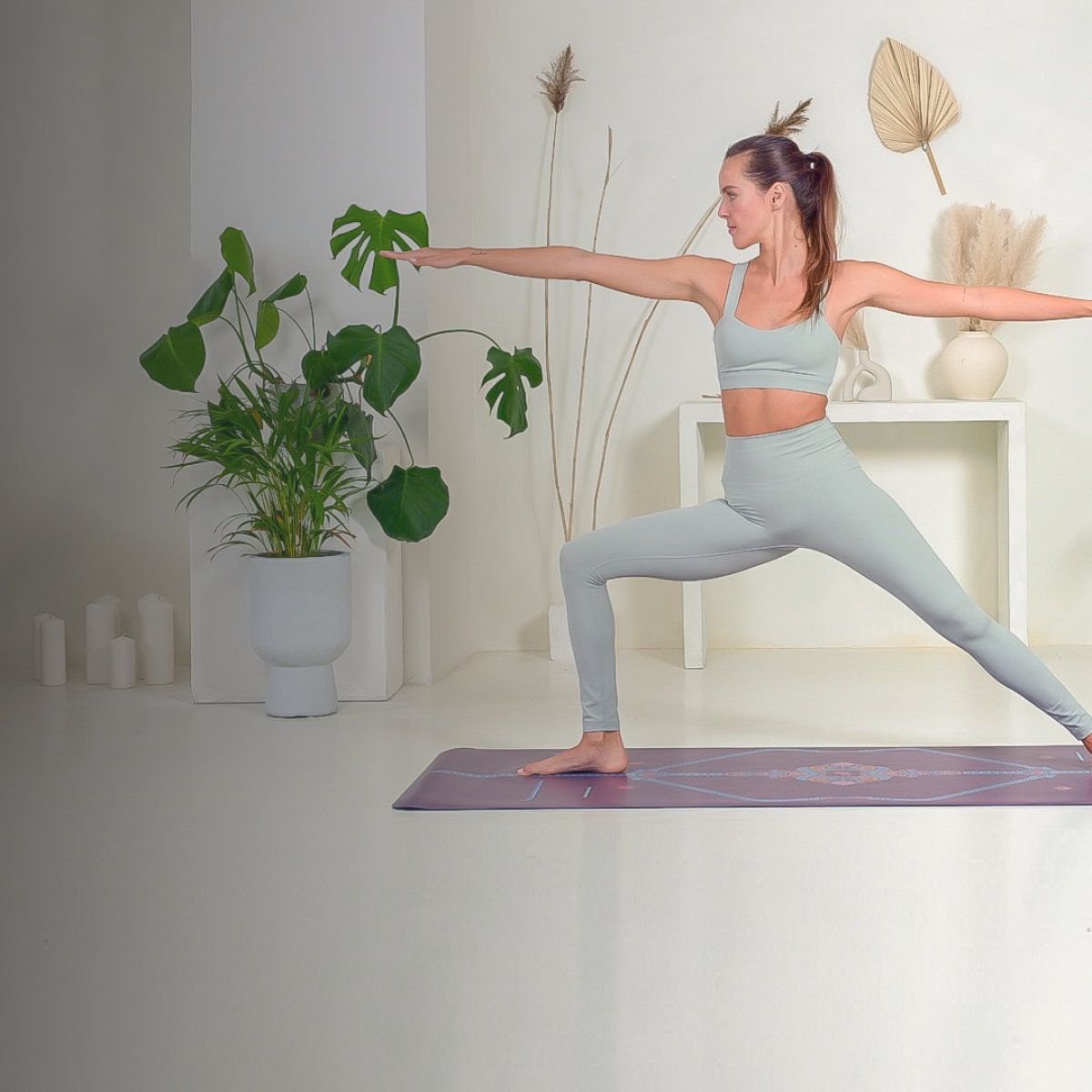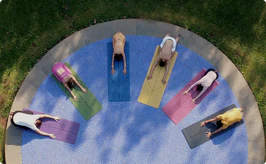Why Alignment Matters
Alignment in Yoga refers to the precise positioning of the body in each pose. Immediate, intuitive visual feedback is essential. Without it, repeated misalignment can lead to strain or injury. At Liforme, we recognised the importance of this aspect and developed a unique and original AlignForMe® System that works for all bodies, all types of Yoga and levels.
The combination of intelligent markers gives you as much, or as little, guidance as you need. Whether you're in a class setting or practicing at home, our alignment guide encourages you to attain optimal alignment, enhancing the effectiveness and transformative potential of your practice.
Liforme's AlignForMe® Design


How Does Liforme's AlignForMe® Design Work?
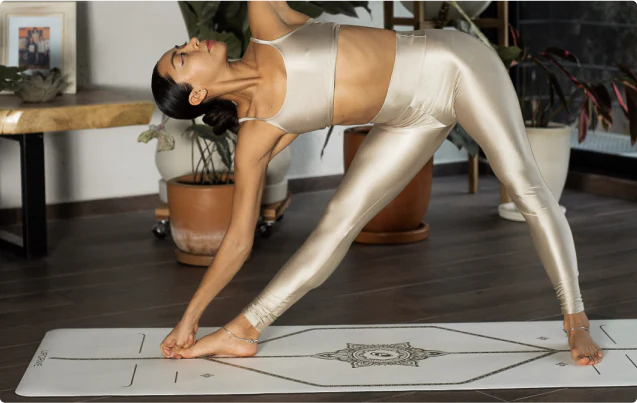

Central Line
The Central Line is the backbone of the AlignForMe® system. It runs strongly down the length of the mat so you can always tell if you’re set up symmetrically. When the feet or hands are meant to be parallel, as in Mountain Pose, Downward Facing Dog, or Plank, a simple glance down allows you to make sure your extremities are equidistant from the line.


End-to-End Lines
The End-to-End Lines work in concert with the Central Line, providing another important reference point. In Downward Facing Dog, these lines are particularly helpful guides for placing the hands and feet evenly. Two different sets of End-to-End Lines are provided to account for the wide variety of heights and positions.
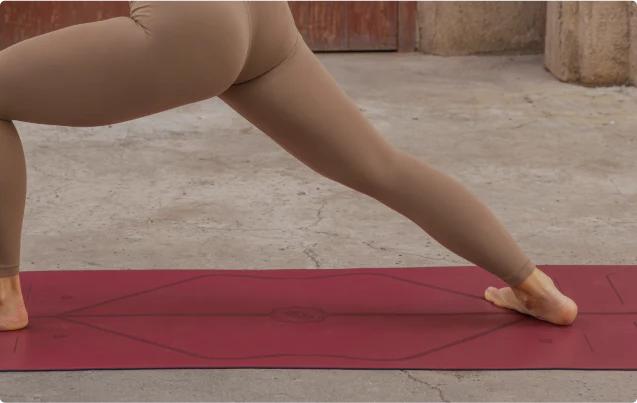

45° Lines
In standing postures, the 45° Lines provide a visual reference to help you align your back heel and find stability in poses such as Pyramid, Warrior I and Warrior II.


Reverse Points
When you’re preparing for a pose like Reverse Table Top or Wheel, use the triangular Reverse Points as guides for the hands and feet to help you find shoulders’ distance and hips’ distance apart. Since they are equidistant from the Central Line, the triangular reverse points and also be used as another visual reference for a balanced set-up in poses like Cat-Cow and Plank.
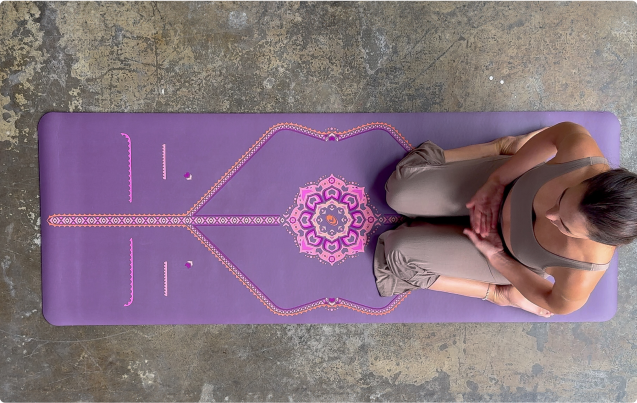

The Centrepiece
Right at the centre of your mat, the centrepiece, anchors the AlignForMe® design in symmetry, ensuring balance and stability and giving you another way to grow and elevate your practice while staying rooted in alignment.
What are the benefits of Liforme's Alignment System?

Injury Prevention
Each Yoga pose has an optimal alignment that respects the natural range of motion of your joints. Alignment guides help you to understand how to position your joints correctly, ensuring that the appropriate muscles are engaged and supporting the movement. This engagement helps distribute the load evenly across your muscles, reducing the risk of overuse or strain.
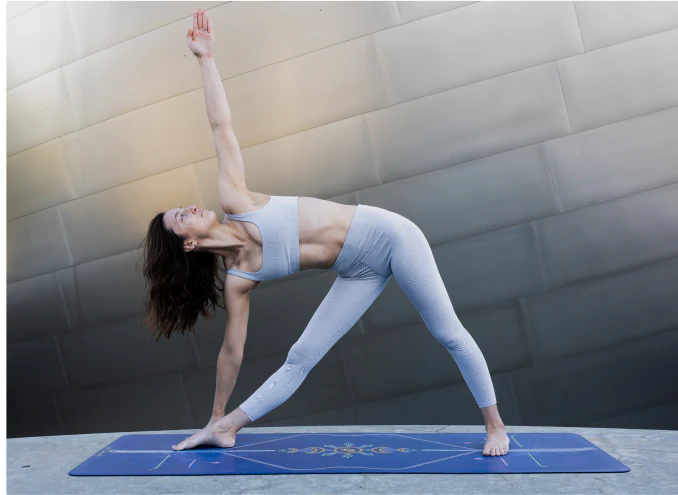
Better Form & Posture
Alignment guides encourage you to pay attention to symmetry and balance in your poses. They provide visual guidance on how to align different parts of the body, allowing you to build each posture form the ground up. If your feet, for instance, are improperly placed, it can throw off your hips and shoulders, leading to imbalance, poor posture and overcompensation elsewhere.
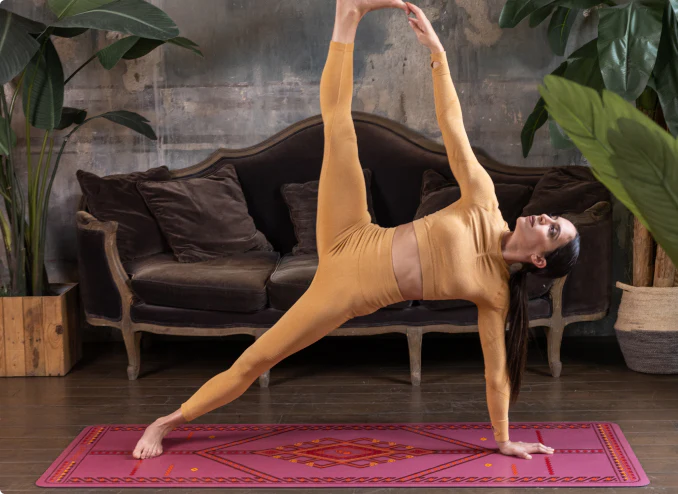
Progression
Consistently practising good alignment allows you to safely advance in your Yoga practice. Alignment guides help you develop greater body awareness and your understanding of alignment principles, so you can deepen your practice and explore more advanced poses, making new poses feel more accessible.

